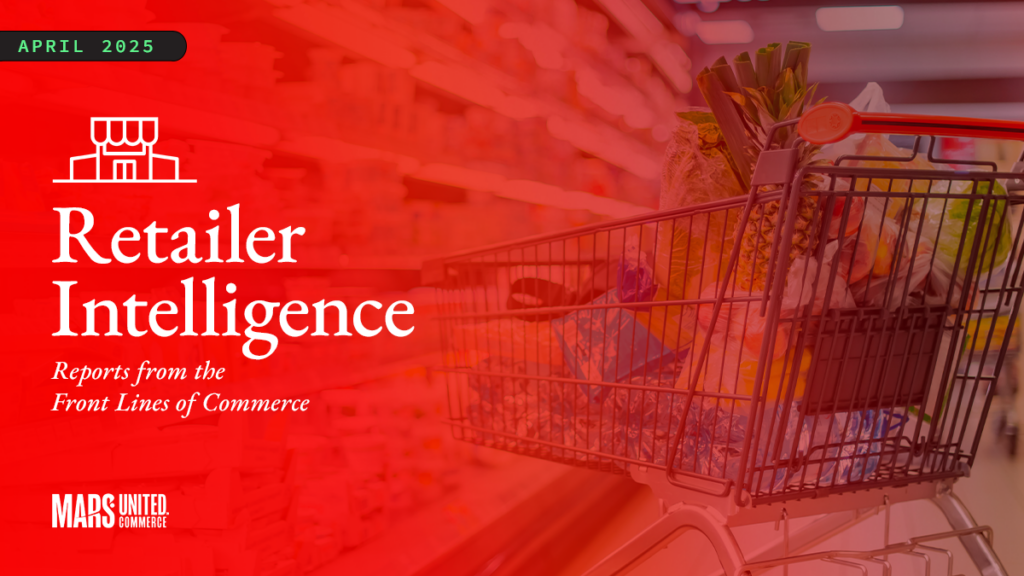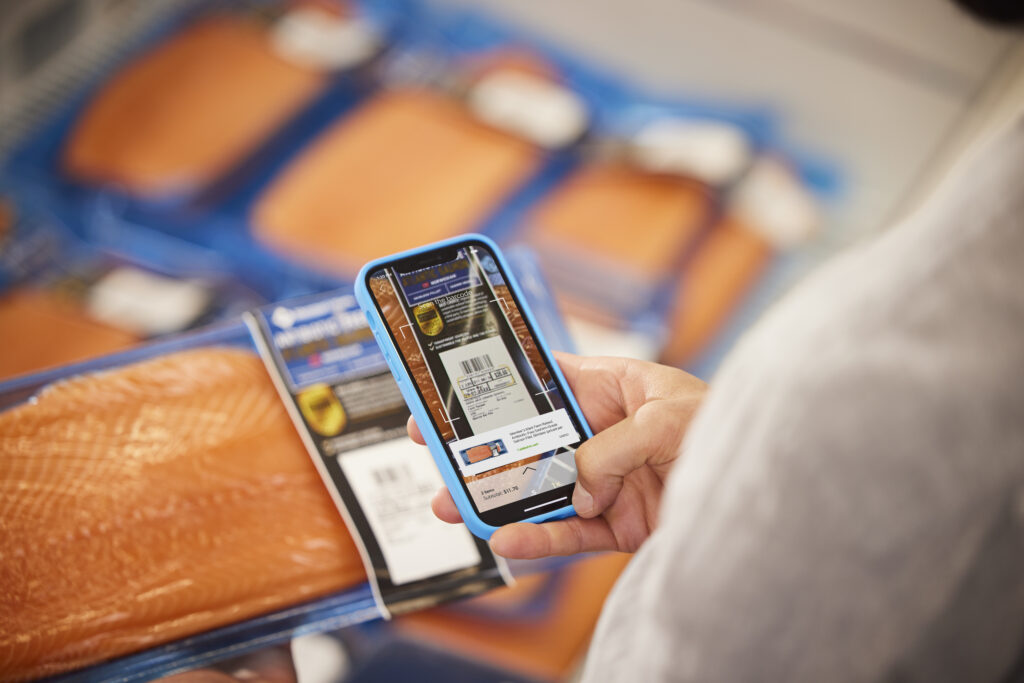Can CPG brands effectively sample on Amazon.com? Just ask Alexa.
By John Willkom, The Mars Agency
Ecommerce is expected to be the leading driver of consumer packaged goods sales growth for years to come, and Amazon.com is positioned to generate the majority of that growth.
Those facts are leading CPG brands to find effective ways of unlocking the vast potential that awaits them on Amazon. And while it may not be among the most obvious opportunities, sampling is a tactic that grocery brands should consider.
In this article, we’ll look at three creative examples of sampling on Amazon that many brands probably never considered in the pre-COVID world — but which potentially could be even better methods of activation than the in-store demos and sampling tactics the industry has traditionally used.
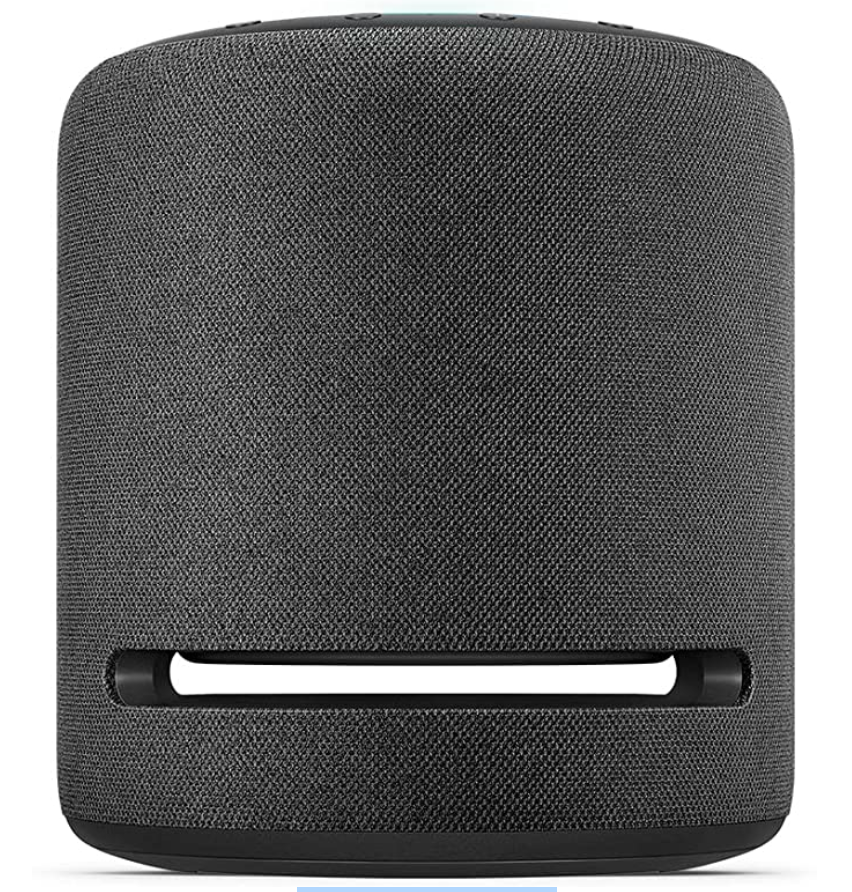
Ask Alexa
The pandemic led many CPGs to move away from in-store sampling, including some brands that have long employed the tactic as a major business strategy. For instance, Campbell Soup Company knows that its V8 +Sparkling Energy line tastes great and is a “better for you” alternative to competitive beverages, but the company still needs to find ways to get people to try the products. So the CPG and The Mars Agency put together a simple three-step campaign to drive trial through Amazon.
We targeted the brand’s core demographic with striking banner ads that instructed people to ask their in-home Amazon Alexa voice-activated device to send them a sample of V8 +Sparkling Energy (see below). That’s all they had to do. The order was automatically generated, a single-can sample went into the mail, and they tried the product. We followed up with retargeting asking them how they liked the sample and if they had any feedback about the product.
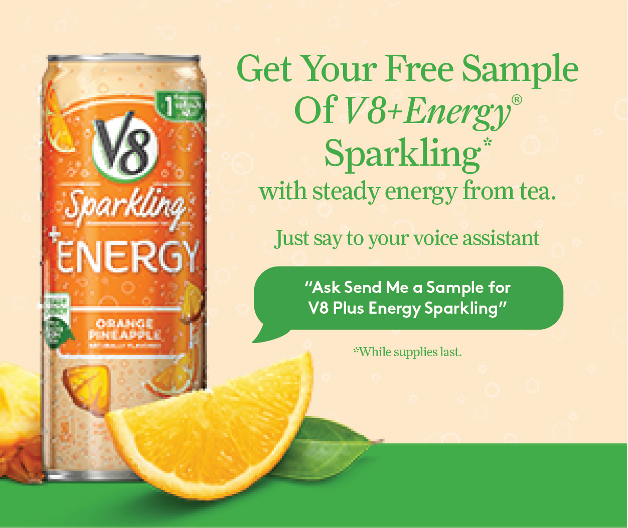
The campaign generated amazing results: We delivered 22,000 samples (via Send Me a Sample) in 22 days, and 36% of the recipients opted in to receive further communication from V8. But most impressively, almost one-fourth (24%) of the people who got a sample posted something about the experience on social media.
And that’s an important difference: At a traditional in-store sampling event, a shopper would taste the beverage, maybe a family member would try one, too, and they’d both throw their disposable cups in the garbage. The brand has impacted two people at best.
But the halo effect from this campaign was monstrous. We sent out 22,000 samples, but we also inspired 5,000 people to post about the experience all over social media — taking pictures, having friends ask about where they could buy the product, getting people to retweet. That significantly magnified the reach, providing additional impact that makes this method an effective new way to sample.
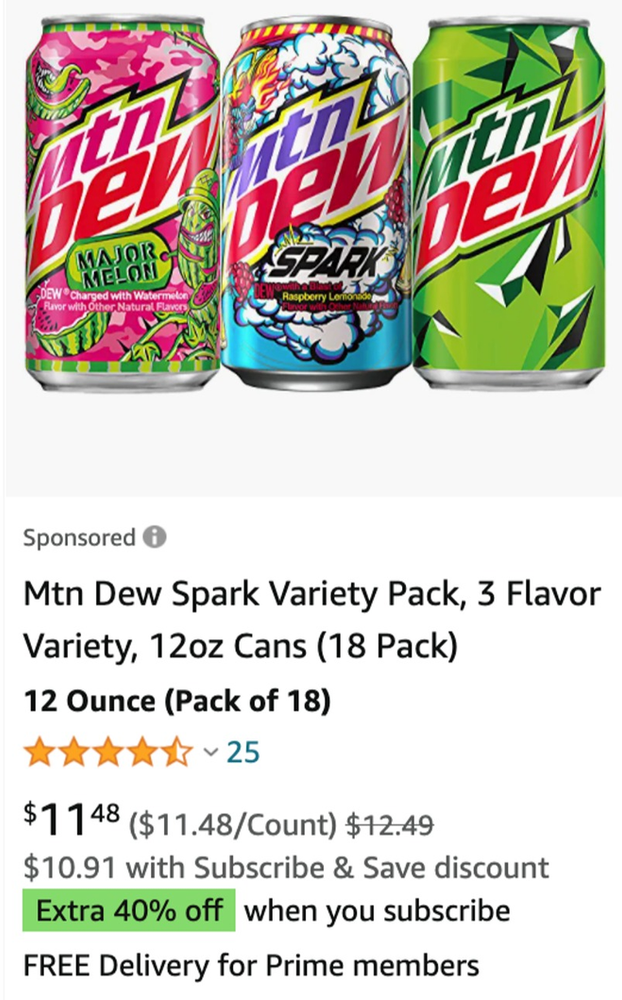
Buying Trial
The next example involves a tactic that’s already tried and true. In this campaign, Mtn Dew combined a new Major Melon flavor with a limited-edition Spark flavor but also with their hero SKU. So they’re asking shoppers to take a little bit of a risk, but not too much of a risk by buying three cans of something that they’ve never tasted before — a smart way to encourage trial on its own.
But what I really loved about this campaign was Mtn Dew’s search strategy. They got very specific about showing up first for “soda” and deprioritizing other keyword phrases.
There are 82,000 searches per month on Amazon for “soda.” There are roughly 12 brands bidding on that keyword phrase, and at roughly $1.50 per click for an exact match, you can compute what Mtn Dew’s trial might look like, how many impressions it might get, and what the conversion rate could possibly look like.
This is an easy, very simple way to drive trial, if you have some relevance and you know that a certain keyword phrase implicitly is your target audience.
Challenging the Status Quo
I recently typed “soup” in the Amazon search bar, and here’s what came up. In general, I love the idea of using videos in search because they can really catch your attention and make you say, “Wow, what is this? — although, to be honest, some of the videos I find are kind of boring or they take too long to get to the point.
But this video was great: It told you the brand had products that are better nutritionally, and it offered you a limited-time deal to try it. And if you liked the product, it promised you a Subscribe & Save coupon to keep you around as a long-term customer.

Another interesting aspect of a campaign like this is to consider how you should evaluate the results. If you’re simply going to measure ROAS, you’ll typically be under water because of the video production costs involved, the cost per click fees, and the narrow margins on a CPG product like this.
However, you also should be measuring customer lifetime value, evaluating results not just after one month but also six to 12 months later. If you do that, you’ll probably find that the amount you paid to attract that first purchase put you in the negative — but you might also learn that the average person who saw that video went on to buy seven units of soup over a six to 12-month period. And then you’ll be in the positive.
Sampling in CPG is often costly in the short term, but it can return tremendous long-term benefits. You just need to be patient and have the right measurement capabilities in place. And as CPG sales continue to migrate online, you should consider adding it to your Amazon strategy.

About the Author
John Willkom is SVP-Ecommerce at The Mars Agency, where he helps brands win in the ever-changing world of connected commerce. John has a passion for brand building and discovering “what’s next,” is an avid sports fan and accomplished author, having penned the Amazon best-selling book, Walk-On Warrior, in 2018.
John and his wife, Allison, have two daughters and call Minneapolis home.

